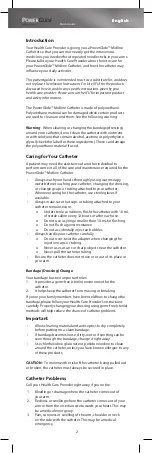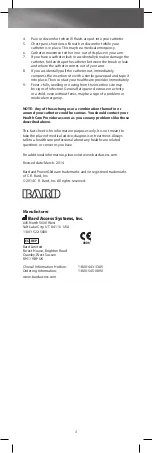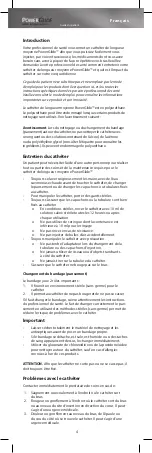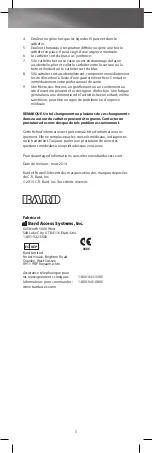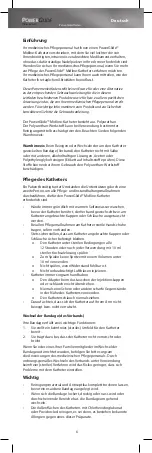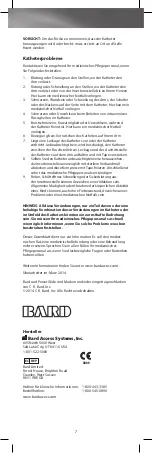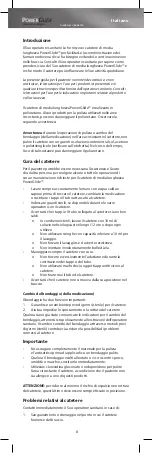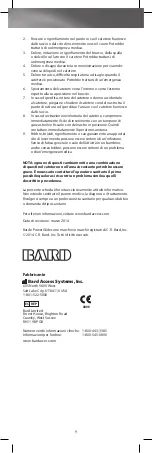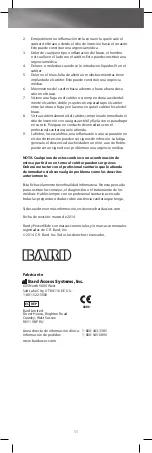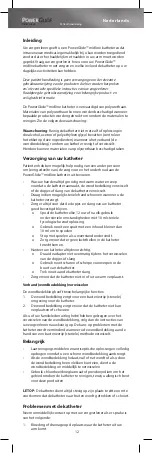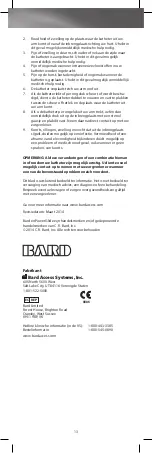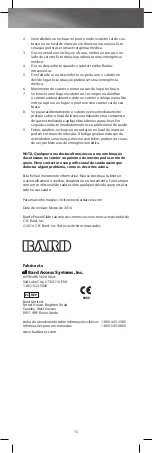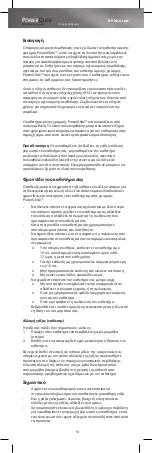
English
2
Patient Guide
™
English
Introduction
Your Health Care Provider is giving you a PowerGlide™ Midline
Catheter so that you can more easily get the intravenous
medicines you need without repeated needle sticks in your arms.
Please talk to your Health Care Provider about how to care for
your PowerGlide™ Midline Catheter, and how the catheter may
infl uence your daily activities.
This patient guide is not intended to act as a substitute for, and does
not replace, the relevant Instructions For Use (IFU) for the products
discussed herein, and/or any specifi c instructions given by your
health care provider. Please consult the IFU for important product
and safety information.
The PowerGlide™ Midline Catheter is made of polyurethane.
Polyurethane material can be damaged when certain products
are used to clean around them. See the following warning:
Warning: When cleaning or changing the bandage (dressing)
around your catheter, do not clean the catheter with ointment
or with solutions that contain alcohol, acetone or polyethylene
glycol (check the label for these ingredients). These can damage
the polyurethane material if used.
Caring for Your Catheter
A patient may need the assistance of another individual to
perform some or all of the care and maintenance required for the
PowerGlide™ Midline Catheter.
•
Always wash your hands thoroughly using warm soapy
water before touching your catheter, changing the dressing,
or changing caps or tubing attached to your catheter.
•
Whenever caring for the catheter, use sterile gloves if
available.
•
Always make sure that caps or tubing attached to your
catheter remain secure.
o
Under sterile conditions, fl ush the catheter with 10 mL
of sterile saline every 12 hours or after each use.
o
Do not use a syringe smaller than 10 mL for fl ushing.
o
Do not fl ush against resistance.
o
Do not accidentally inject air bubbles.
•
Always handle your catheter carefully.
o
Do not over-twist the adapter when changing the
injection caps or tubing.
o
Never use scissors or sharp objects near the catheter.
o
Never pull the catheter tubing.
•
Be sure the catheter does not move in or out of its place in
your arm.
Bandage (Dressing) Change
Your bandage has two important roles:
1.
It provides a germ-free (sterile) environment for the
catheter.
2.
It helps keep the catheter from moving or breaking.
If you or your family members have been told how to change the
bandage, please follow your Health Care Provider’s instructions
carefully. Properly changing your dressing using germ-free (sterile)
methods will help reduce the chance of catheter problems.
Important
•
Allow cleaning material and antiseptics to dry completely
before putting on a clean bandage.
•
If bandage becomes loose, dirty, wet or if spotting can be
seen through the bandage, change it right away.
•
Use chlorhexidine gluconate or povidone iodine to clean
around the catheter, unless you have known allergies to any
of these products.
CAUTION: To minimize the risk of the catheter being pulled out
or broken, the catheter must always be secured in place.
Catheter Problems
Call your Health Care Provider right away if you notice:
1.
Bleeding or drainage where the catheter comes out of
your arm.
2.
Redness or swelling where the catheter comes out of your
arm or from the insertion site towards your heart. This may
be a medical emergency.
3.
Pain, soreness or swelling of the arm, shoulder or neck
on the side with the catheter. This may be a medical
emergency.


